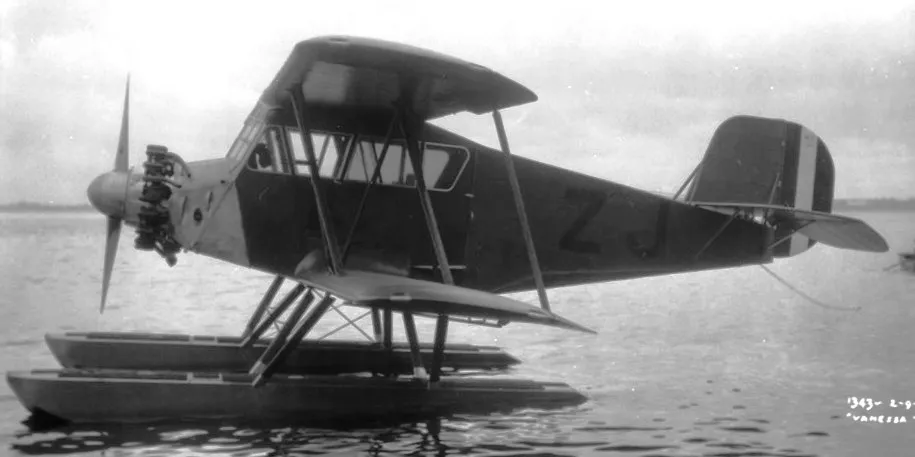Vanessa (Total: 1, Canadian: 1, Group 0)
Canadian Vickers Vanessa

Canadian Vickers Vanessa, RCAF Reg. No. G-CYZJ, 2 Sep 1927
The Canadian Vickers Vanessa was a Canadian biplane transport seaplane of the 1920s. It was a single-engine, twin-float biplane of mixed construction, evaluated by the Royal Canadian Air Force and used for experimental air-mail services.
The Vanessa was developed as a private venture commercial seaplane. The Canadian Vickers Chief Engineer based his design on the contemporary Stinson cabin biplane which had been introduced in the United States. The one feature that was a departure from the Stinson was the use of interplane struts which formed an "X" (when viewed from the front), thus eliminating the need for traditional wire bracing and allowing easy access to the cabin. The enclosed cabin fuselage was constructed of steel tubing as were various support structures along with the tail surfaces. The remainder of the aircraft was of wood construction and the entire aircraft was fabric covered. Ailerons and flaps, the latter being an unusual feature in aircraft of that time, were fitted to each of the equal span wings and were also interconnected by struts.
A prototype, G-CYZJ, was constructed, after which the Royal Canadian Air Force evinced an interest in the type as a communications aircraft. Service testing indicated that the aircraft was under-powered and the Armstrong Siddeley Lynx was replaced with a 220 hp (160 kW) Wright Whirlwind.
In September 1927, the still experimental Vickers Vanessa was used for series of trial airmail runs involving the first airmail delivery. While waiting off the dock at Rimouski, Quebec, on 9 September 1927, Royal Canadian Air Force Squadron Leader John H. Tudhope received 502 lb (228 kg) of mail from the inbound RMS Empress of France. While taxiing the Vanessa for takeoff, a strut ruptured and punctured the aircraft's starboard float causing it to tip over to that side. The propeller lopped off half the float and the machine broke up, resulting in the aircraft sinking. Tudhope scrambled to safety and the mail was rescued, eventually reaching its destinations by rail. Following a subsequent salvage, the Vanessa was considered uneconomical to repair and was abandoned.
Despite a very brief career, the Vanessa has the distinction of being one of the first enclosed cabin aircraft to be designed and built in Canada and the first aircraft to be used in an experimental airmail flight in Canada. Wikipedia
Vanessa serial G-CYZJ
s/n GCYZJ
c/n CV36

Canadian Vickers
G-CYZJ
A.S. Lynx / Wright Whirlwind
Known Units:
Civil registration G-CAFG reserved on 15 April 1926, for company trials. Taken on strength 26 April 1927 as G-CYZJ. Initial tests complete on 27 April 1927. Modified to decrease drag, flown again 21 August 1927 by Squadron Leader J. H. Tudhope. A. S. Lynx engine replaced by Wright Whirlwind to increase performance, f/f 30 August 1927 by Tudhope. Ferried to Ottawa 2 September by Tudhope, lost fuselage fairing en route. Trial mail flights to steamers in lower St. Lawrence from 7 September 1927. Damaged on takeoff from near RMS Empress of France on 9 September 1927, float fitting failed. Badly damaged, salvaged but never repaired. Officially struck off strength on 13 September 1927.last update: 2025-November-19
1927-April-26 Taken on Strength 2022-02-07
1927-September-09 Accident Category A Float fitting failed on takeoff in St. Lawrence River. 2025-03-30
1927-September-13 Struck off Strength 2025-03-30
